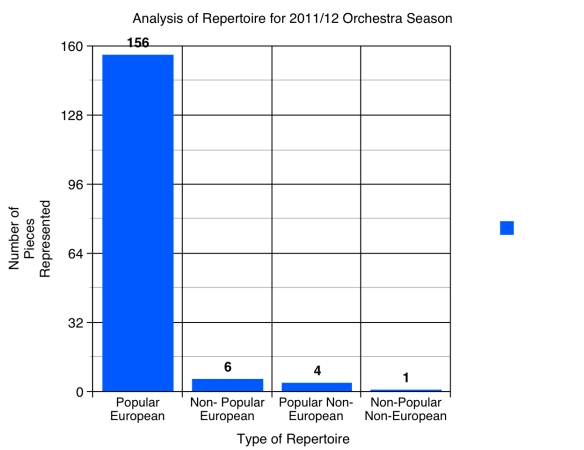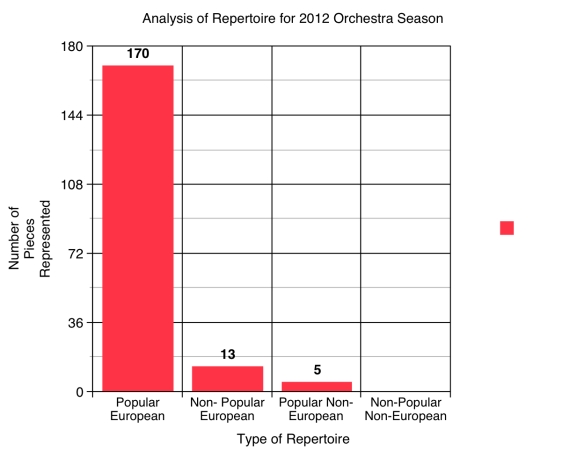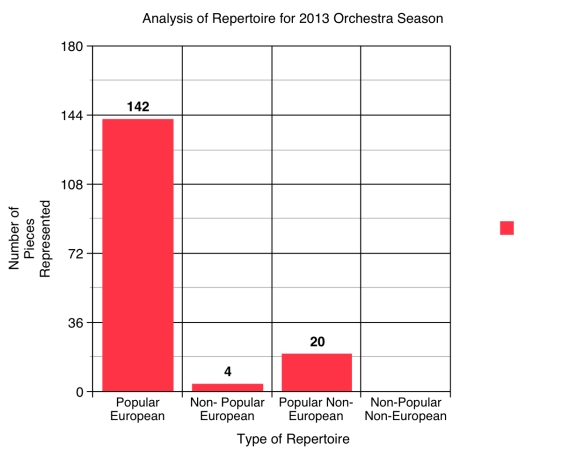INTRO: They say that pigeons develop odd and repetitive behaviours (such as hopping on one foot) should you feed them pellets at random intervals, presumably made of seed or some such food that pigeons like. The theory here is that they believe whatever they happened to be doing at the time triggered the pellet dispensing and if they manage to do it again (in just the right manner) then they will get more pellets. When the next one inevitably arrives it simply reinforces the behaviour and the cycle continues ad infinitum.
HYPOTHESIS: Anyway, it has been over two years since the early days of this blog and I thought it’s a spectacular time to revisit my inaugural rant about orchestral repertoire. I actually had attempted this about one year ago but it remained in draft from and I think now time and some more far-reaching data can provide a three-dimensional-time-instalment on the topic! Basically, we will look at the concert series for 2013 not only of the original Australian orchestra but three separate seasons of another very well-known orchestra in the UK and see what’s what.
METHODOLOGY: The pieces played fall into categories of:
- Works by popular European Composers
- Works by unpopular European Composers
- Works by popular non-European Composers
- Works by unpopular non-European Composers
A word from the recapping porpoise:
The definitions of European and non-European is quite simple but the former includes Russia (as part of a highly integrated ‘Western’ music culture). The definition of ‘popular’ I probably defined earlier in my last rationale post, but for apathy’s sake will re-make it up here and then for obsessive-compulsiveness’s sake compare afterwards anyway, (to test my own consistency).
Popular composer (My 2013 Definition): “A composer who is mainstream enough to be known by a regular concert going audience and can be expected to appear regularly (anywhere from extremely frequently to once every few years) in an orchestral concert series.”
Popular composer (My 2011 Definition): “A well-known composer (Beethoven, Mozart, etc) that a typical Classical concert-going audience could expect to hear every few years or so.”
Close enough! Anyway now we are all on the same (web)page here are the results:
RESULTS:
For the original Australian Orchestra:
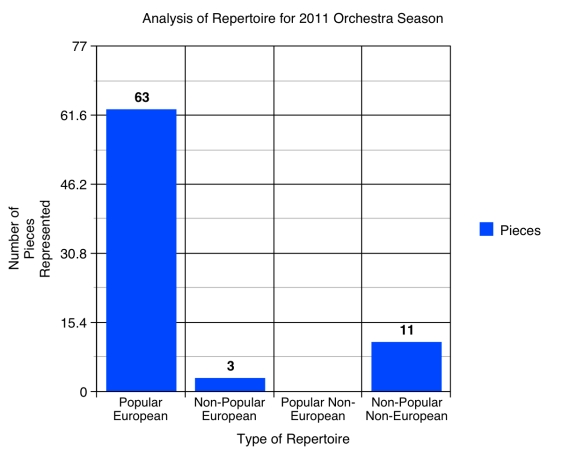
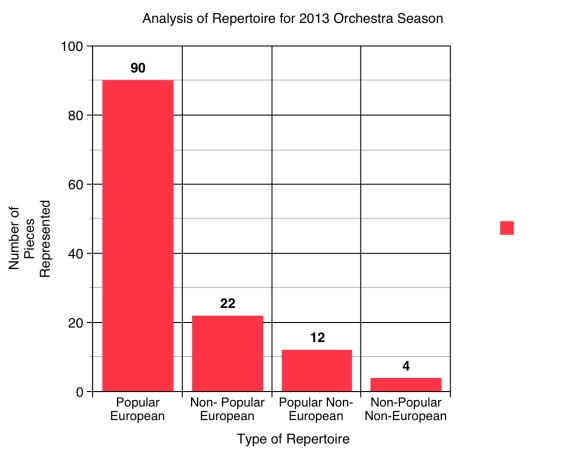 Well that’s slightly more promising 70.3% of the series (down from 81.8%) made up of European classical standards.
Well that’s slightly more promising 70.3% of the series (down from 81.8%) made up of European classical standards.
Now let’s take a peak of three 6-month seasons of the UK orchestra.
January 2012 to June 2012
July 2012 to December 2012
January 2013 to June 2013
This is a little bleaker…
The percentages chronologically here are 93.4%, 90.4% and 85.5%. Although it’s a slight downward trend the average is still 89.8% of the repertoire is typical European, and in one and a half years only one non-popular, non-European composer is featured.
CONCLUSIONS: I’ve been wondering a little recently about what would happen if orchestras (or classical artists in general) dropped the facade of being part of a ‘living tradition’ and dedicated themselves only to playing what is considered the classical music canon. With this repertoire already making up around 90% of a season (or much more if you include the popular non-Europeans) I doubt the regular concert-going audiences would complain or even notice if it was upped to 100%.
It seems to me that when these orchestras explore or innovate its out of begrudging tokenism and perhaps it would be healthy to say/admit “Wait, this is for all intents and purposes a museum-culture (not that there’s anything wrong with that) and you should go elsewhere if you’re not a part of that.” I think modern composers deserve better then to be lining up for meagre pellet distribution from a culture that is demonstrably against them… it is not good for one’s mental state. Or maybe perhaps what I mean is they should rebuke the insinuation that they are the latest edition of the classical ‘tradition’ and instead be seeking to be relevant to other groups who may be more interested rather than forcing new things on a audience obsessed with the past.
CODA: The humble pigeon is actually quite exceptional for a commonplace bird*, unlike the ibis, which is unexceptional for a much-worshiped deity symbol. Look them up. Yes, both of them. And remember, nothing says ‘Deutsch touristischen’ more emphatically** than excitedly taking photos of the colloquial dump-birds.
**This is not strictly true… a LOT of things say ‘Deutsch touristischen’ emphatically, not least themselves.


